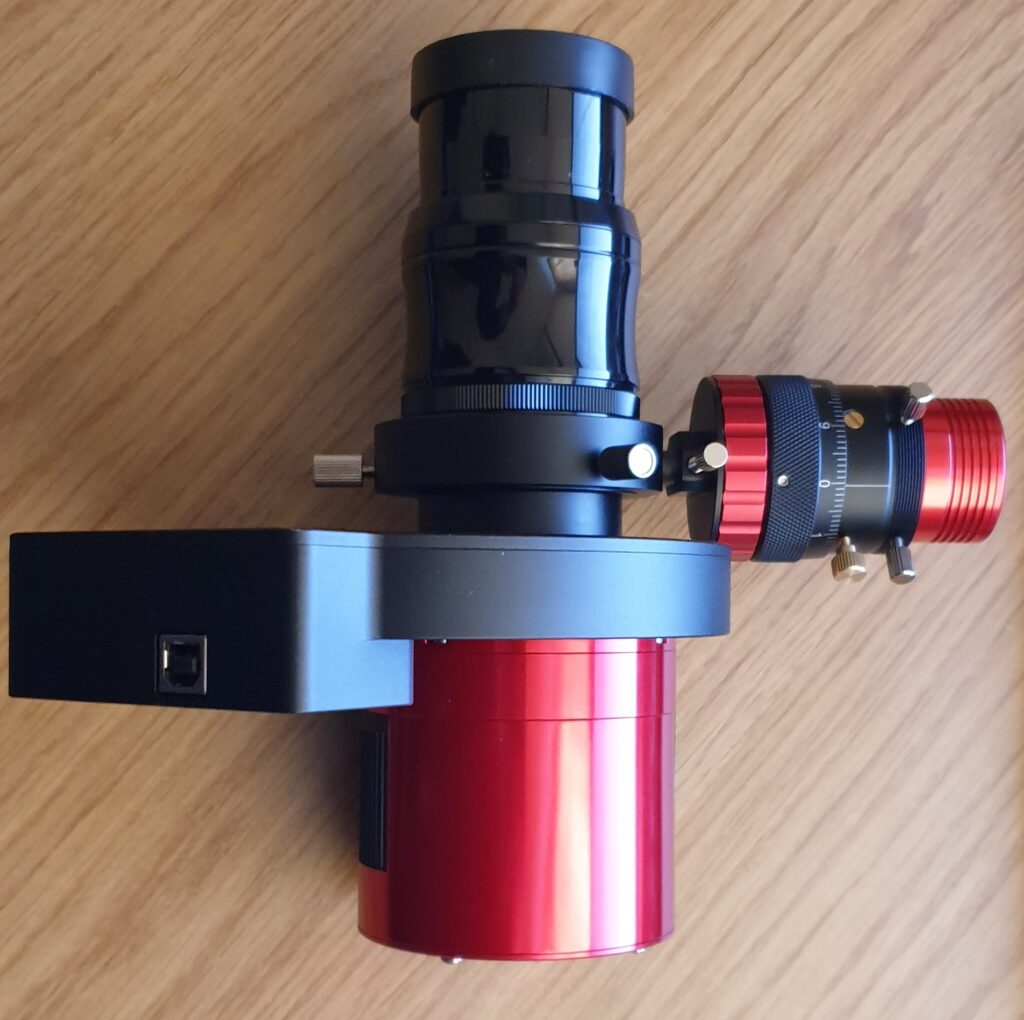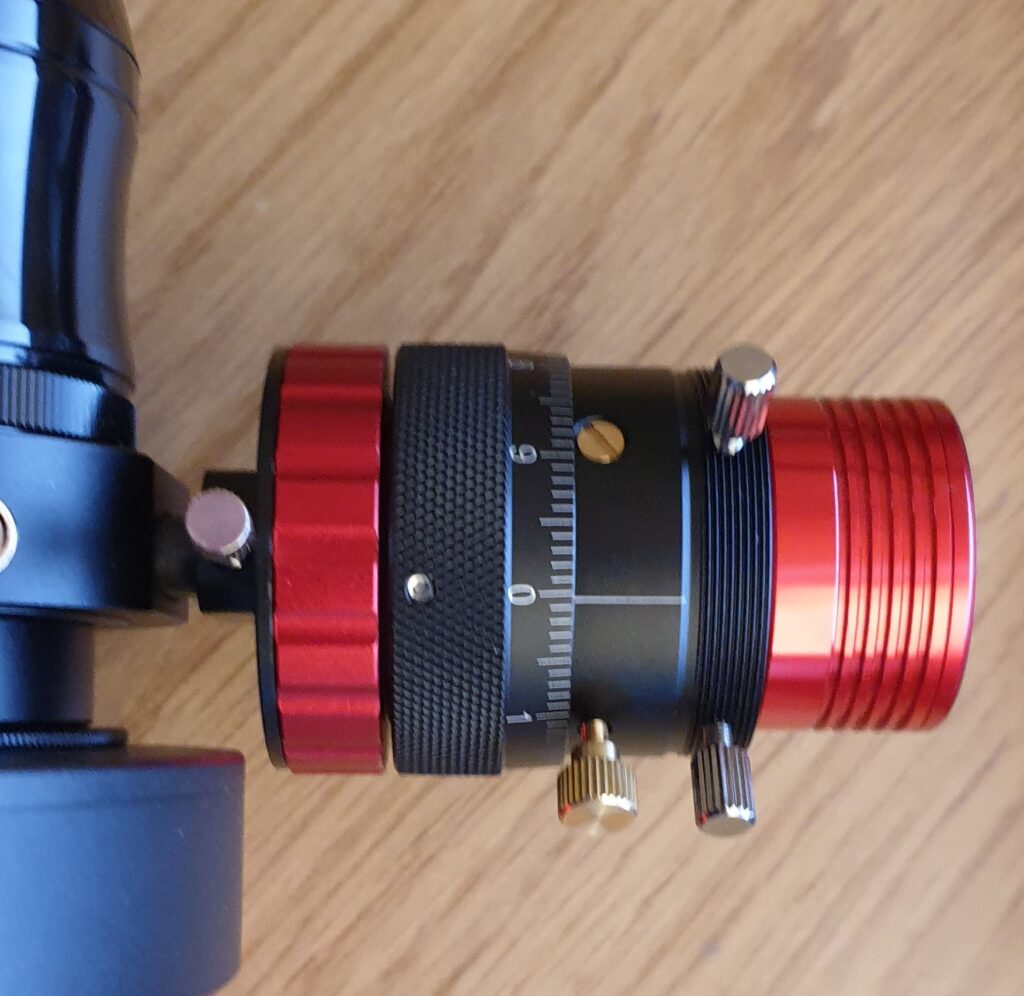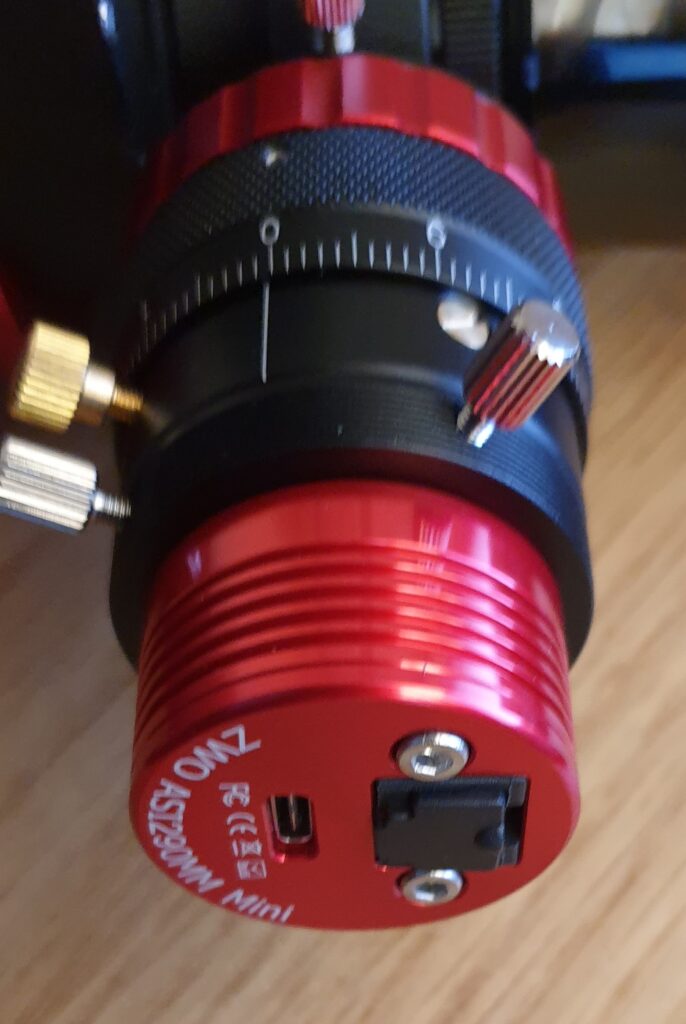So, at last the ASI290MM mini & Helical Focuser have arrived. This will hopefully be a significant improvement to guiding.
But first, some backstory.
Back when I went and got my main imaging camera, the ASI1600MM Pro, I bought the set of the 8-slot Filterwheel, all the filters (L,R,B,G,Ha,OIII,SII) and an Off-Axis-Guider (OAG). I was looking for a reasonable guide camera to attach to the OAG. The long list of equipment for the imaging train meant that my budget was somewhat limited. I chose the ASI120MC-S.
Really, the ASI120MC-S does guide quite well, but it is not entirely suited to the task. Firstly it is a colour planetary camera. Colour is not necessarily of any use when guiding, and might even hinder it for all I know, but at the time, completely new to astrophotography (and not really experienced now!). I thought, well, it will probably work for guiding, and I might be able to use it for other things too. In any case that’s what I got, and it has served me well for guiding.
Recently I’ve been looking to see whether I could get some improvement in this area, and eventually decided that the ASI290MM mini might suit pretty well.
Let’s look at some comparisons from the graphics at the ZWO website. First, the ASI120MC-S

Now, the ASI290MM mini:
-1024x447-1.jpg)
OK, so the sensor on the ASI290MM is bigger, but so is the resolution, the pixel size on the 120 is 3.75 um, the specs don’t highlight that on the ASI290MM, but I believe the pixel size on that is 2.9 um. The read noise on the ASI290MM is a lot lower, also note that on the mini it is USB2.0 rather than USB3.0, which probably counts for why the frame rate on the AS120MC-S is higher. It is difficult to compare QE between the two, the MM mini slightly higher.
Clearly with the ASi120MC-S having a full well 13000, capable of higher frame rates, seem to lean that this is a camera meant for planetary imaging, which can do guiding, whereas the ASI290MM mini is a guide camerea, that you might be able to do some mono planetary imaging. So the mini is squarely aimed at guiders, and I hope it will excel at first light.
The areas where the ASI120MC-S excels at better than the ASI290MM mini are not significant for guiding, and the areas where the ASI290MM is better (lower read-noise, more pixels, lower pixel size) are all areas which should improve guiding, hopefully allowing me to reduce exposure times and cope with the small amount of light pollution I sometimes have.
Here are some pictures of the imaging train:



Update:
So I had my first outing with using the ASI290MM mini as a guide camera last night. I can confirm that the camera behaves as a distinct step up when compared against the ASI120MC-S. Firstly, with exposures set to 1s and binning set to 2×2 I was able to constantly guide without losing a star for quite a few hours, and the only times I lost guiding was when I attempted more aggressive settings. The frame acquisitions during guiding showed considerably less noise, and it should be noted that I was guiding without any dark or calibration frames. The helical focuser was great as well, I was able to quickly use ASICAP on my Tablet to ensure that the guide camera became parfocal with the main imaging camera. It literally just took a few seconds, and the position was easily locked into place with the thumbscrew. My experience of trying to use the adjustments on the OAG previously had led to a lot of frustration messing about with Alan keys in the dark trying to achieve some sort of focus. The clamp on the helical focuser also allows for rotating the guide camera to ensure that it is somewhat aligned properly with the mirror and/or the main camera. I’m of the opinion that with time, and the upcoming upgrades to OTA and focusing I will routinely be achieving sub-arcsecond guiding.